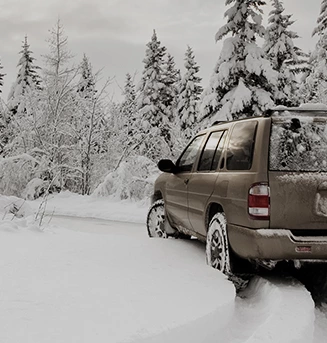H20 No! (Driving Through Standing Water)
February 20, 2022
In a year marked by unusually heavy flooding in North America, drivers are very aware of the possibility they may find themselves driving where water has come over the road. It can be a daunting and frightening situation. Flooding waters can move quickly and unpredictably, so you have to keep your wits about you when you encounter that situation.
Here a sample of one vehicle manufacturer's guidelines on what to do. First, the vehicle is designed to go through some water, but you must be careful. Never attempt to drive through water deeper than the bottom of your tires.
You can get out of your vehicle to check the depth of the water, but you can never be sure that you aren't going to drive into a spot where the road has washed away. You can't see below the surface of the water, and suddenly you could find yourself in a place where the road drops off unexpectedly. In swift moving storm runoff, your vehicle could literally be floating away with the current, putting your life and those of your passengers in mortal danger.
Never go more than 5mph/8 km/hr when you drive through standing water. That minimizes the waves you create. If you DO find yourself in water that is touching your drivetrain components, that water can damage them. And if you get water in your engine, it can lock up in seconds and stall. The potential damage can be catastrophic.
You may have found yourself driving in water deep enough to reach your drivetrain components, and it's essential that you have a technician check the fluids to make sure they haven't been contaminated. That includes engine oil, transmission and axle. Driving with fluids contaminated with water can severely damage those components.
The bottom line is to avoid driving through water at all if you possibly can. Check your vehicle's owner's manual to see if there are specific guidelines for driving YOUR vehicle in standing water. It's information that could save your life.
TLC Custom Exhaust Brakes & Tires
1735 N Main St
Royal Oak, Michigan 48067
248-541-8300
http://www.tlcautocareroyaloak.com
Need Service?
More articles from TLC Auto Care

(Timing Belt)
November 30, 2025
You may have heard about an important part of your vehicle's engine called a timing belt, and many know that if that belt breaks, it can cause some very serious engine problems. Not all vehicles have them, and the ones that do generally have smaller engines. The timing belt keeps the engine sy... More

More than Pads and Rotors (Brake Caliper Replacement)
November 23, 2025
You might be familiar with brake pads and rotors, two components of your vehicle's brakes that have to be regularly serviced. Here's another important component of your brakes: the calipers. Calipers are used in disc brakes, the type of brakes now found in most recently manufactured vehicles. A... More

Knowledge is Power (Battery Testing)
November 16, 2025
Its likely happened to you once or twice. You head to your vehicle, open the door, turn the key and lo and behold, your battery is dead. Now youre stranded, may have to get a jump or a tow, and youll definitely be late for wherever you were headed. While your vehicle may sometimes give you warni... More










